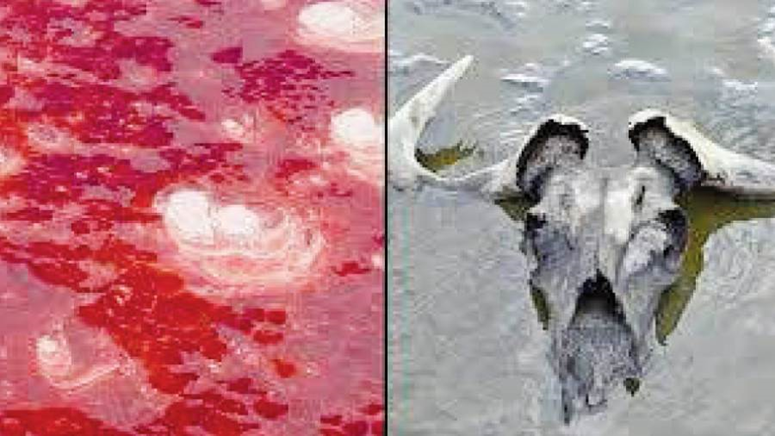A strange lake that turns animals that touch it into "stone" instantly

The idea of a lake that instantly turns animals that touch it to stone may sound like something out of Greek mythology.
But it's actually true in Tanzania, where animals live in fear from one of the deadliest lakes in the world.
Lake Natron is known as a prime breeding ground for the less endangered flamingos, but the animals risk being frozen forever in its salt if they dare approach its shores.

The bacteria, which give the water its blood-red color, are some of the only organisms that can withstand 78 degrees Fahrenheit (26 degrees Celsius), the deadly salt concentration and alkalinity.
Objects that fall into the water decompose quickly while those that fall on its edge are "covered with salt" that "remains forever", according to ecologist David Harper of the University of Leicester.
The hostile conditions of the lake can be blamed on nearby Ol Doinyo Lengai, the only active volcano that emits natrocarbonatites, rare carbonate lavas.

These are fed into the lake through channels that run through the volcano, contributing to its harsh alkalinity of over 10 pH.
And only the flamingos, which gorge themselves on the nutrient-rich cyanobacteria in the water, flock to the area to mate.
But even they can't escape the harsh salt lake conditions, and can fall victim to it.
Photographer Nick Brandt explained in his book about the lake, Across a Ruined Land: “I found unexpected creatures, all kinds of birds and bats, washed up along the coast of Lake Natron. No one knows for sure exactly how they die, but...the water has a very high percentage of soda and salt.”

Aside from the “corpses,” Lake Natron has had a role in preserving history going back 19,000 years.
In 2016, geologists found more than 400 human footprints in the mud flats of the shore of Lake Natron.
"Once the footprints were compressed into the wet mud and ash, the wet sediment dried out and hardened," said Dr. Cynthia Loetkios Pierce, a geologist at Appalachian State University.
The mud that preserved these footprints is believed to have washed in from Mount Oldwinyo Linggai, where large amounts of ash were discovered. After that, it is believed, the surface could dry in days, or even hours, with the traces preserved.
Source : websites

